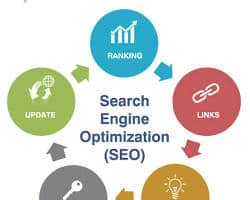Maximizing Local Visibility: How to Update Map Locations and Boost SEO for Small Business Clients
In today’s digital marketplace, local search optimization has become the cornerstone of small business success. With over 80% of consumers using search engines to find local businesses, ensuring your clients’ map locations are accurate and their SEO is optimized can make the difference between thriving and merely surviving. This comprehensive guide will walk you through the essential steps to update map locations and improve SEO for your small business clients.
The Critical Importance of Accurate Map Listings
Map listings serve as digital storefronts for local businesses. When potential customers search for services “near me,” search engines rely on business information across various platforms to determine which businesses to display. Inconsistent or outdated information can severely impact visibility, causing businesses to lose potential customers to competitors with more accurate listings.
Google Business Profile (formerly Google My Business) remains the most crucial platform, as it directly feeds into Google Maps and local search results. However, businesses must maintain consistency across all major platforms including Apple Maps, Bing Places, Facebook, Yelp, and industry-specific directories.
Step-by-Step Map Location Updates
Audit Existing Listings Begin by conducting a comprehensive audit of your client’s current online presence. Search for their business name, phone number, and address across major search engines and directories. Document every listing found, noting inconsistencies in business names, addresses, phone numbers, hours of operation, and business descriptions.
Claim and Verify Business Profiles Ensure your client has claimed their Google Business Profile and completed the verification process. This typically involves receiving a postcard with a verification code at the business address. For businesses with multiple locations, each location requires separate verification.
Standardize Business Information Create a master document containing the exact business information to be used across all platforms. This includes the complete legal business name, precise address format, primary phone number, website URL, business hours, and category selections. Consistency is paramount – even minor variations like “St.” versus “Street” can confuse search algorithms.
Update Core Platforms First Prioritize updates on major platforms that have the greatest impact on local search visibility. Start with Google Business Profile, then move to Apple Maps Connect, Bing Places for Business, Facebook Business, and Yelp for Business. These platforms often syndicate information to smaller directories, amplifying the impact of accurate listings.
SEO Optimization Strategies for Local Businesses
Keyword Research and Implementation Local SEO requires a different approach than traditional SEO. Focus on location-based keywords that combine services with geographic modifiers. For example, “plumbing services downtown Chicago” or “family dentist near Lincoln Park.” Use tools like Google Keyword Planner, SEMrush, or Ahrefs to identify high-volume, low-competition local keywords.
On-Page Optimization Optimize your client’s website with location-specific content. Include the business name, address, and phone number (NAP) on every page, preferably in the footer. Create dedicated location pages for businesses serving multiple areas, and ensure each page provides unique, valuable content about services in that specific location.
Content Marketing for Local Relevance Develop content that demonstrates local expertise and community involvement. Write blog posts about local events, industry news affecting the area, or helpful tips specific to the local market. This content should naturally incorporate local keywords while providing genuine value to readers.
Schema Markup Implementation Implement local business schema markup on your client’s website to help search engines understand the business information better. This structured data can improve the chances of appearing in rich snippets and local pack results.
Managing Online Reviews and Reputation
Online reviews significantly impact both map rankings and customer decision-making. Develop a systematic approach to review management by encouraging satisfied customers to leave reviews on Google, Yelp, and industry-specific platforms. Respond professionally to all reviews, both positive and negative, demonstrating commitment to customer service.
Create follow-up email sequences for recent customers, making it easy for them to leave reviews by including direct links to review platforms. Consider implementing review management software to streamline this process across multiple clients.
Monitoring and Maintenance
Local SEO requires ongoing attention rather than one-time optimization. Set up Google Alerts for your client’s business name and location to monitor new mentions online. Use tools like Moz Local, BrightLocal, or Whitespark to track listing accuracy across multiple directories and identify new citation opportunities.
Schedule monthly reviews of Google Analytics and Google Search Console data to track local search performance. Monitor key metrics including local search impressions, clicks, and conversion rates from local traffic.
Conclusion
Updating map locations and improving local SEO requires systematic effort and ongoing maintenance, but the results can dramatically impact small business success. By ensuring accurate, consistent business information across all platforms and implementing targeted local SEO strategies, you can help your clients dominate local search results and attract more qualified leads.
Remember that local SEO is an evolving field, with search engines regularly updating their algorithms and ranking factors. Stay informed about industry changes and continuously refine your strategies to maintain competitive advantages for your small business clients.

